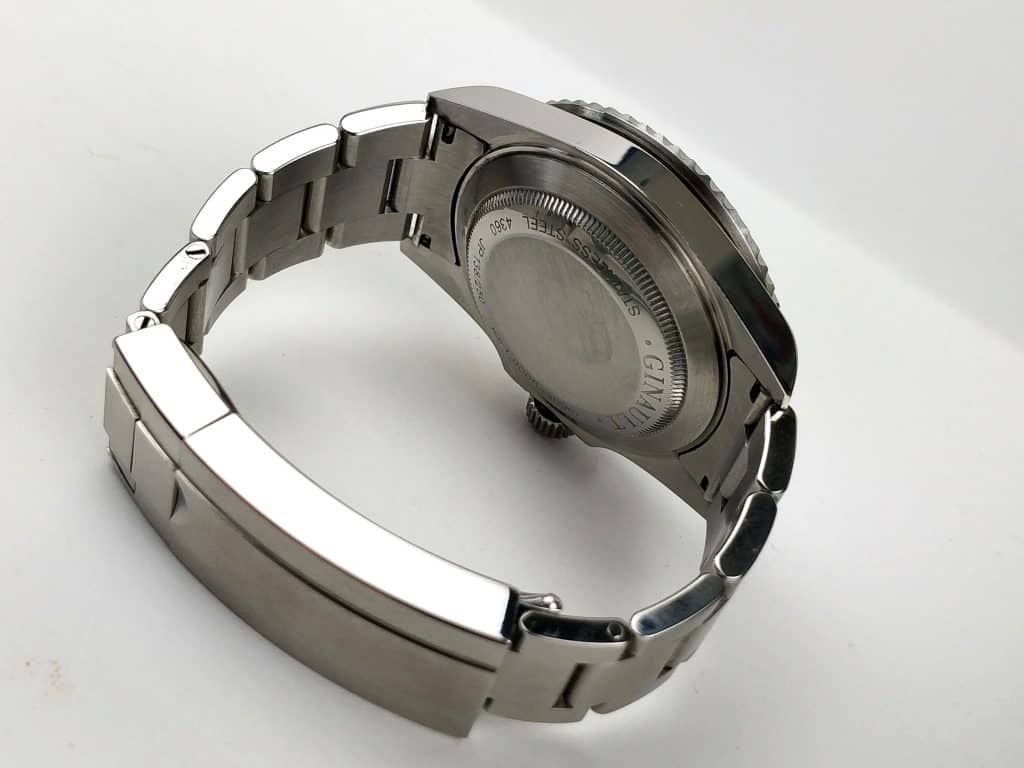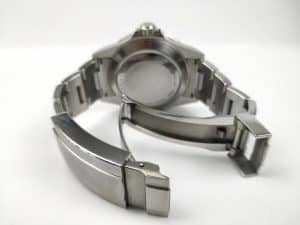Whether you’re using a watch with a metal band, a rubber band, or a leather band, there is every likelihood that your wristwatch has a clasp.
While this feature is pretty much available in most wristwatches, it can sometimes be tricky to operate.
Plus, with the myriad of clasps available on wristwatches these days, we are sure you want to know a thing or two about watch clasps.
Thankfully, today’s post has all the information you’re looking for and more.
After reading today’s post, you should know for sure the types of clasps available and how they operate.
Types of watch clasps
For starters, there are basically two types of clasps you’ll find on wristwatches today, and they include deployment clasps and buckles.
Regardless of what type of watch you have, these two major types of clasps are pretty consistent across all brands.
While deployment clasps are popularly seen on metal watches, pin buckles are more frequently used on rubber and leather watches.
Let us also quickly add that there are several types of deployment clasps.
Sure they look different in design, but they pretty much perform the same operation.
In terms of popularity, deployment clasps are more popular than pin buckles, and that’s because they are considered safer.
Even if they open up while you’re still wearing your watch, the chances of your wristwatch slipping off your wrist are pretty slim.
Deployment clasp and its functionality
Like we mentioned earlier, deployment clasp is very popularly seen on metal watches.
While it is commonly referred to as a deployment clasp, it is also called a butterfly clasp, deployment buckle, invisible double locking clasp, or deployant clasp.
As its name implies, the deployment clasp is specially designed to fasten a watch band to the wrist for an excellent fit and look.
Although deployment bands are an elegant option for many watch lovers, this expanding metal mechanism has succeeded in eliminating the bulky look of longer watch bands, especially those with traditional buckles.
But here lies the problem, as sleek as deployment watch clasp makes your watch look, this mechanism can be pretty tricky to operate, especially when compared to other types of watch clasps.
But not to worry, we will show you how easy it is to operate deployment clasps.
Operating deployment clasps
If you’re a fan of deployment clasps, we are sure you’ll be interested in knowing how this type of watch clasp operates.
Well, read on as we delve deeper into how deployment clasp works.

How a deployment clasp works
Deployment clasps have been popular since they first hit the watch scene in 1910.
A brainchild of Louis Cartier, deployment watch clasps are designed so that they fold and unfold, resulting in a comfortable and perfect fit around the wrist.
When a deployment clasps are closed over the wrist, the buckle becomes almost invisible.
To attain this look, a deployment clasp comes with two wings, each folding towards the middle from the opposite end of the clasp.
How to effectively open a deployment clasp
Even though opening deployment clasp isn’t rocket science, you want to get things right, as forcing the operation could end up ruining the clasp altogether, and we doubt if you’d like that very much.
To open deployment clasps, all you have to do is pull the joined ends of the clasp outward.
By this, we mean moving the joined end away from each other, just like a butterfly will spread its wings.
How to open and fasten the deployment buckle
If you have a watch with a leather band, operating the deployment buckle may not be so easy.
But not to worry, we are here to make the process seamless and hassle-free.
Just like metal watches, the deployment buckle on leather bands works almost the same way.
To start, the deployment buckle on most leather bands must be pulled open.
If you did this correctly, you should see a pin designed to fit into the holes on the band.
To fasten the band, you must position it so that the pin faces the hole that perfectly fits your wrist size.
Once you have found the right spot on the band, all you have to do is push the pin through the hole and proceed to press the top and bottom areas of the hinged buckle, so they fit in place.
If you did this correctly, the deployment buckle should snap firmly into place.
Once that’s done, all that is left to do is slip the end of the band via the loops on the strap.
How to unfasten and remove deployment clasp watch
Unfastening deployment clasp is also a tricky operation.
To begin, you want to pull the end of the watch band via the loops.
Once that is done, you can proceed to open the deployment clasp buckle to expose the pin.
Now, remove the band from the hole and proceed to pull the band out of the buckle.
To reopen the butterfly clasp, all you have to do is pull the band upward so that each wing unfolds.
If you are finding it hard to open the claps, you can simply pull on each clasp to open it, just like you initially did while putting on the watch.
Using deployment clasp buckle with double push-button
If your watch has a deployment clasp buckle with a double push-button, you want to make sure you get the operation correctly, so you don’t end up ruining the clasp.
While this type of deployment clasp isn’t as complicated as others, it pretty much functions like other regular clasps.
But unlike other clasps where you have to pull on the clasps while opening or closing them, all you have to do with this type of clasp is push down the buttons to release the clasp mechanism.
It’s that simple.
Frequently asked questions: Learn more about watch clasp
What is a butterfly clasp?
If you prefer metal watchbands, then there is every likelihood that one of your watches has a butterfly clasp.
To cut to the chase, this type of clasp is attached to the band using a tube that has pins on either side of the band.
To add an extra layer of security, most butterfly clasps have push buttons that are designed to lock the clasp in place.
Are butterfly clasps good?
Compared to conventional leather buckles, deployment clasps have proven to be way more secure.
Thanks to their metal construction, deployment clasps don’t just fit nicely; they also hold securely, regardless of what you throw at them.
How durable are deployment clasps?
Kudos to the materials they are made of; deployment clasps are more durable than other conventional clasps.
Also, because deployment clasps aren’t prone to bending, they have a pretty long lifespan.
- Top Luxury Watch Homages – Ultimate Guide 2024
- Patek Philippe Nautilus Homage Watch – The Ultimate Guide
- The Full Bulova Watch – Ultimate Guide
- Oris Dive Watch – The Ultimate Guide 2024
- Breitling Dive Watch Collection – The Ultimate Guide
- How To Set a Moon Phase Watch – The Ultimate Guide
- What is a Tourbillon Watch – The Ultimate Guide


